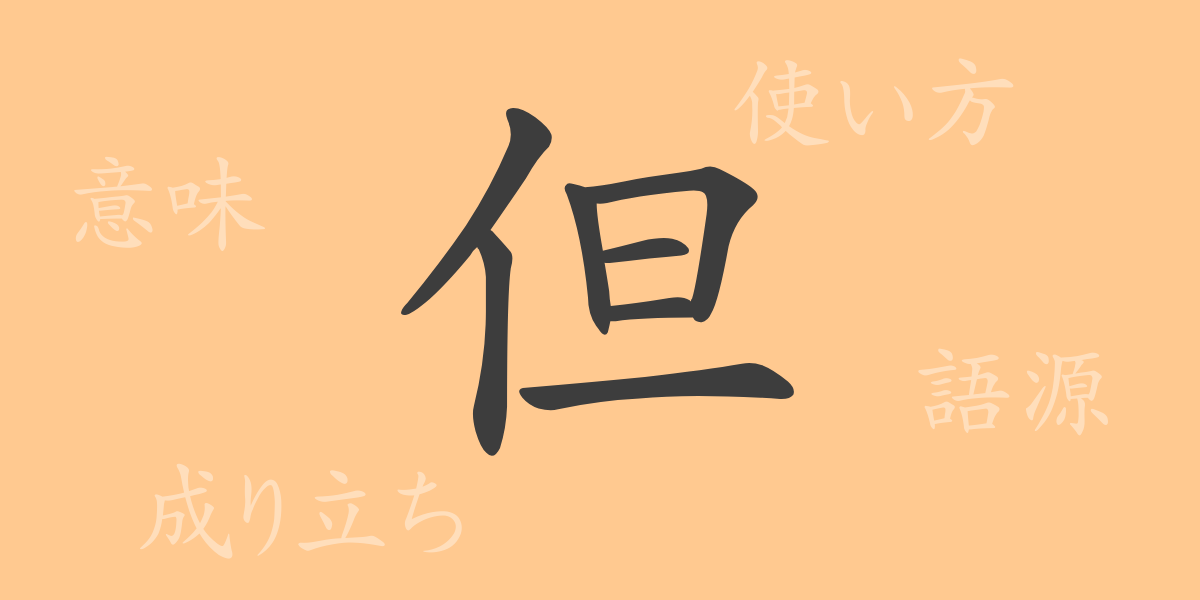In Japanese, each kanji character carries a deep history and unique meaning. “但” (ただ) (tada) is one such character that, despite its frequent use in conversation and writing, many are unaware of its origins and diverse applications. This article focuses on “但,” exploring its development, meanings, and usage, as well as related phrases and proverbs to uncover its charm.
Origins of ‘但’ (ただ) (tada)
The kanji “但” originated in ancient China and has evolved over time. Originally used as a demonstrative term, it later developed to express conditions and limitations as a conjunction. Even after being adopted into Japanese, its fundamental implications remained unchanged, fulfilling a similar role within Japanese context.
Meaning and Usage of ‘但’ (ただ) (tada)
“但” is primarily used in the meanings of “however” or “but,” introducing exceptions or conditions to preceding statements. This allows speakers or writers to impose specific constraints on the information provided, offering more precise details to listeners or readers.
Readings, Stroke Count, and Radical of ‘但’ (ただ) (tada)
As a commonly used kanji in Japanese, it’s essential to know the basics about “但”:
- Readings: The on’yomi (Sino-Japanese reading) is “タン” (tan), and the kun’yomi (native Japanese reading) is “ただ” (tada).
- Stroke Count: “但” consists of 7 strokes.
- Radical: The radical of this kanji is “人” (person), serving as the phonetic component.
Phrases, Idioms, and Proverbs Using ‘但’ (ただ) (tada) and Their Meanings
“但” appears in many Japanese phrases and idioms. For example, “但馬牛” (たじまうし) (Tajima ushi) refers to high-quality cattle from the Tajima region (now northern Hyogo Prefecture), renowned as a premium beef brand. “但書” (ただしょ) (tadasho), or “conditional clause,” is used to specify conditions or special notes in contracts and documents, requiring careful reading due to its inclusion of crucial information.
Summary on ‘但’ (ただ) (tada)
The kanji “但” enriches the Japanese language with its historical background and significant role in articulating conditions and exceptions in speech and writing. Frequently used to detail nuances in communication, this character is indispensable for understanding the subtleties of Japanese expressions. Through this exploration, your appreciation of the expressive power and practical applications of “但” should deepen.

























